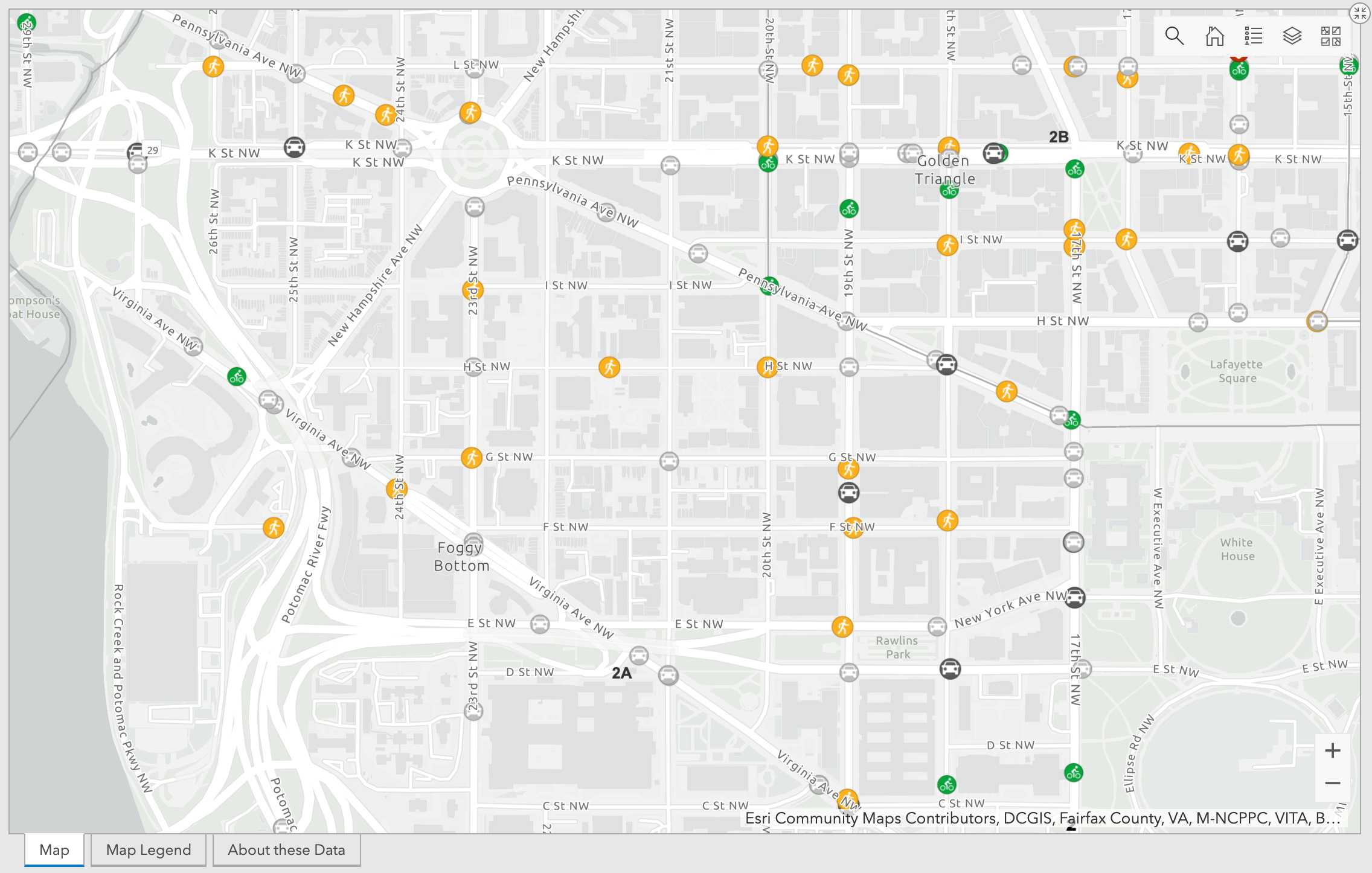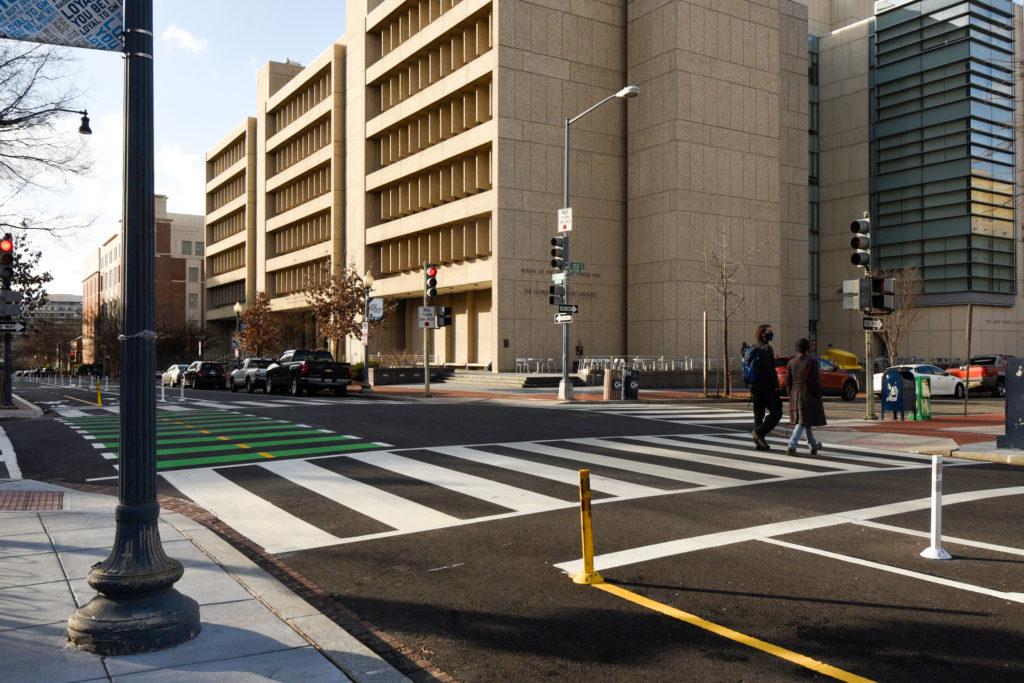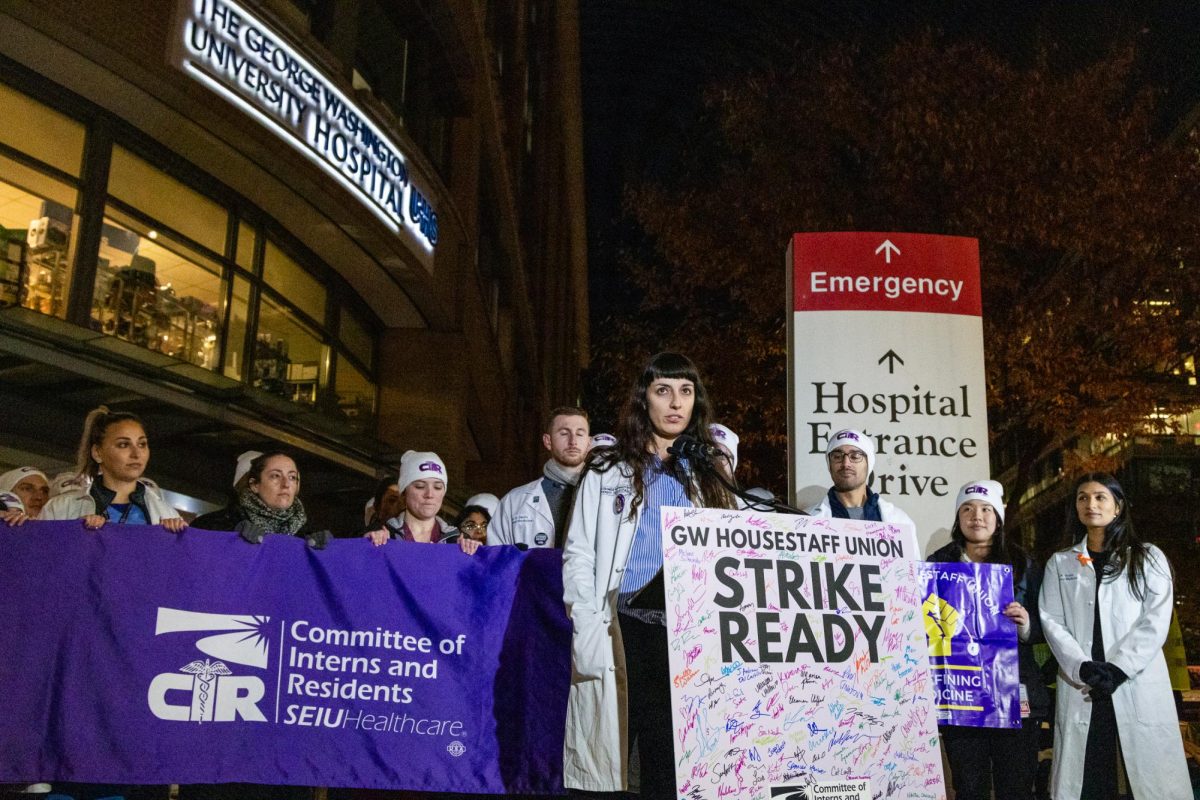The District Department of Transportation released a map late last month offering a first-ever look at the spread and cause of traffic injuries and fatalities on campus.
The map pinpoints the time, place and location of every traffic injury and death since 2017 and shows traffic crashes in Foggy Bottom have plunged by about 60 percent, from nearly 1,400 in 2017 to fewer than 600 in 2020. Transportation experts said the map can help city leaders and locals identify safety concerns and craft solutions like tightening enforcement, lowering speed limits and creating bike lanes to protect pedestrians and bicyclists from traffic injuries in Foggy Bottom.

Courtesy of the District Department of Transportation
DDOT officials released the interactive map late last month through Vision Zero DC, an initiative that aims to eliminate traffic deaths and serious injuries by 2024. The map displays traffic deaths and injuries and reports whether they impacted drivers, passengers, cyclists or pedestrians.
The data, updated every Friday, show traffic injuries on campus concentrated along Pennsylvania Avenue and 19th, 23rd and H streets, mostly consisting of pedestrian injuries.
Peter Savolainen, a professor of civil engineering at Michigan State University, said the skew toward pedestrian over vehicular injuries in Foggy Bottom corresponds with a nationwide trend in fatalities involving commuters outside of a vehicle. He said the transportation community has promoted walking over driving because of the health benefits, but that leaves more commuters prone to more severe injuries and a higher chance of death during crashes.
“You are also at significantly greater risk of fatalities if you are involved in a traffic crash, and that just gets back to the physics that are involved,” Savolainen said. “If we are struck by another vehicle, and we are in a car, that’s not going to have as drastic an impact as if we are walking or bicycling.”
He said crashes have also been linked to distracted walking and driving from pedestrians and drivers using cell phones in past years.
“You are putting yourself at risk in those circumstances, and accidents happen all the time where people are just walking and they are not paying attention,” Savolainen said.
DDOT spokespersons Lauren Stephens and Mariam Nabizad did not return multiple requests for comment.
The DDOT map shows that Foggy Bottom and West End neighborhoods saw six “major” and 71 minor injuries with zero deaths caused by traffic crashes last calendar year, compared to two deaths and 15 major and 207 minor injuries the year before.
Since 2017, 10 minor pedestrian accidents occurred along 19th Street, and eight minor injuries occurred on 23rd Street. With more than 90 traffic accidents documented over the past decade on the portion of H Street running through campus, DDOT data show only eight crashes in 2020, following the trend of accidents continually decreasing in the area.
Ward 2 experienced a four-year low in traffic accidents on and near campus in 2019, and the trend continued in 2020 with a nearly 52 percent decrease in major and minor injuries, according to the data.
In 2019, two of the 12 pedestrian fatalities in D.C. occurred during an incident outside The Shops at 2000 Penn, and 23rd Street has also been a frequent area for traffic crashes due to the difficulty navigating Washington Circle when attempting to exit and merge lanes.
James Moore, a professor of engineering at the University of Southern California, said the Metropolitan Police Department should consistently enforce its traffic laws by increasing police presence at night to reduce speeding. He said increasing the police’s enforcement will lead to “good behavior” from drivers.
“We pay the police,” he said. “I would go ahead and enforce traffic laws.”
Moore said DDOT has “laudable” objectives, but eliminating traffic deaths entirely is “unrealistic.” He said DDOT officials would have to make “tradeoffs,” like increasing travel delays and congestion in hopes of considerably slashing fatalities.
“We have got to carefully and analytically trade off the costs of saving lives and thinking very specifically about how we are doing that against the costs of increased travel delays for everyone, which could be in the aggregate very considerable,” he said. “Lives are not infinitely valuable. They are valuable, but if they are infinitely valuable, we would never allow an aircraft to take off.”








